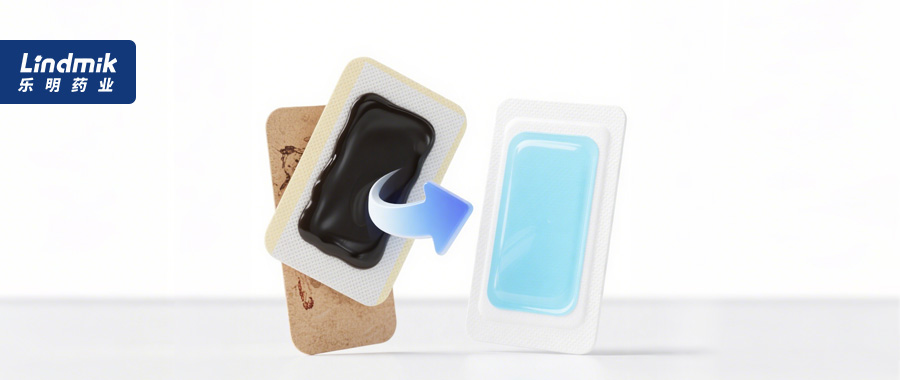
Past life: Grassroots wisdom of traditional plasters
The wisdom of topical patches is rooted in the earliest human survival practices. In ancient times, our ancestors accidentally discovered that applying specific plants (such as grass stems for reducing swelling and relieving pain) to wounds during hunting and labor could accelerate healing, forming the most primitive form of "plaster". By the Warring States, Qin, and Han dynasties, the accumulation of experience gave rise to the emergence of theoretical ideas: the "Fifty Two Disease Formulas" (3rd century BC, the earliest existing medical prescription literature) systematically recorded the use of mercury preparations for external application to treat swelling, pain, and skin diseases, and defined external treatment terms such as "fu" and "tu"; The technological expansion during the Wei and Jin dynasties further solidified the foundation. The history of topical pain relief patches in China has lasted for thousands of years. Traditional Chinese medicine patches often use blood activating herbs such as safflower, angelica, and chuanxiong to relieve pain through "dispelling wind and dampness, relaxing tendons and activating collaterals". This type of plaster was once criticized for its stiff material and poor breathability, until it was upgraded to "elastic tape" in recent years to achieve a tight fit at the joints and improve the experience.
Pain caused by herpes zoster, if the symptoms are covered up with plaster by mistake, may delay diagnosis and treatment.
Musk, safflower and other blood activating ingredients may cause uterine contractions.
The allergy rate of traditional patches is relatively high, manifested as a well-defined patch shaped rash.
Loxoprofen Sodium gel Paste (Loxoprofen ®) As a representative, the new generation of patches adopts a water-soluble polymer matrix, which solves the problems of stuffiness and high allergy rate of traditional patches. Its advantages lie in:
-The drug loading has been increased several times, retaining moisture and enhancing drug penetration.
-Breathability optimization, 24-hour application does not irritate the skin.
-High overall safety: Compared to oral NSAIDs, the risk of cardiovascular events is reduced by 36%.
Roledi ® The water soluble polymer gel matrix technology is adopted to realize drug sustained release through cross-linked polymer network. After application, the drug concentration in the joint cavity can reach tens of times the plasma concentration, forming a therapeutic advantage of "local high concentration and systemic low exposure", significantly reducing the risk of gastrointestinal injury commonly seen with oral NSAIDs. This patch has been listed as a first-line recommended medication in the "Chinese Osteoarthritis Diagnosis and Treatment Guidelines (2024 Edition)", especially suitable for patients who need long-term pain relief.
Modern analgesic patches break through the bottleneck of therapeutic efficacy through dosage form synergy and disease course adaptation: improving the transdermal rate of drugs, achieving precise drug release at the site of inflammation, sustained release, and effective pain relief.
Transdermal patches are evolving beyond the primary form of "local drug storage systemic attenuation" with the dual advantages of "high local concentration+low systemic exposure", and advancing towards higher dimensions of intelligent interception of positive pain signals and neural plasticity regulation. In the future, a patch will become a micro diagnosis and treatment platform equipped with a "pain radar" - real-time sensing of inflammatory factor fluctuations, dynamic release of drugs, identification of abnormal nerve discharges, and targeted repair of sensitization pathways.
-Long lasting effect: Micro needle patches promote drug penetration through laser micro pores, and the efficacy can be maintained for 72 hours.
-Intelligent controlled release: pH responsive gel patch is being developed, which can automatically adjust the release rate according to the acidity of the inflammatory site.
❶ Clean and dry: Damaged skin is prohibited.
❷ Flexible parts: Apply it to the upper arm or torso to achieve full body effect.
❸ Timeliness control: NSAIDs patches should not exceed 24 hours, and traditional Chinese patent medicines and simple preparations should observe the skin reaction.
❹ Cause priority: Unknown pain requires medical attention, and applying ointment is only a symptomatic measure.
From the legend of dog skin plaster to the current 24-hour sustained-release transdermal formulation, the evolution of pain relieving patches reflects the upgrading of human wisdom in combating pain. Modern technology endows traditional dosage forms with precise and safe genes, while in the future, "transdermal drug delivery systems" will integrate sensing, sustained-release, and biofeedback technologies, making a thin patch an invisible armor to protect health. As Han Jisheng, academician of the Chinese Academy of Sciences, said, "transdermal agents are the key path to reduce the burden of drug use" - when ancient wisdom meets modern science, the future of pain management is growing close to the skin.
The global transdermal drug delivery market is expected to grow at an annual rate of over 20% (2025 forecast), and behind every patch is a gentle commitment from technology to quality of life.
Lindmik Pharmaceutical(Suzhou)Co.,Ltd is a high-tech pharmaceutical enterprise focusing on the research and development, production and sales of innovative pharmaceutical preparations.Equipped with a number of its own innovative R&D platform of dosage forms, including the transdermal drug delivery system, and at the same time, actively introducing the world’s leading nano-based drug delivery, microspheres drug delivery and other cutting-edge pharmaceutical technologies by means of “license in”, the company is a new rapidly developing company pharmaceutical companies that catches people’s eyes.

12th Floor, Building 5, Tianyun Plaza, 111 Wusongjiang Avenue, Guoxiang Street, Wuzhong District, Suzhou City

0512-66020899

0512-66022699

215124